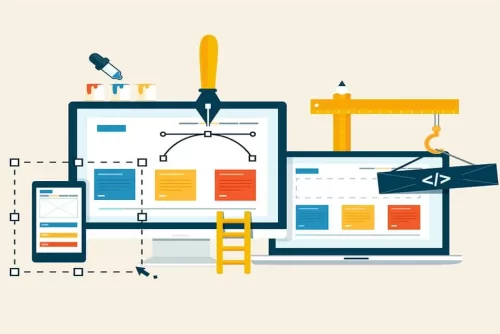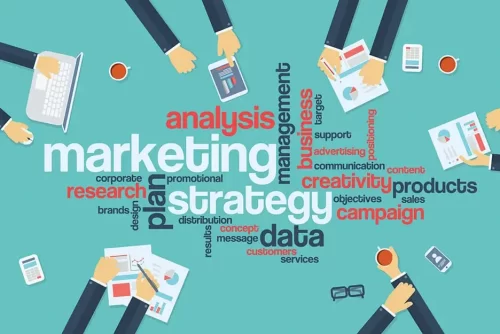When you start to promote your business, consider writing and using an e-book. Writing an e-book is an excellent tool that has worked effectively for many online and off-line businesses. Essentially, you are swapping your e-book for another item of importance – for example, the customer’s approval to be put on your email list, or simply the use of their email address. Generating leads with e-books is a great way to follow up with the customer online and familiarize customers with whatever it is you’re selling.
AI + Human Edited Content Creation.
Only $0.01 per word!

Though e-books are not complex, you do need to have certain skills in order to create an e-book that will effectively market your business. Most companies hire a third party to create their e-book, using professionals who will focus on the topics you want to emphasize to your customers.
Free E-Books Are a Breakthrough for Online Marketing
When you give a potential customer an e-book for free, you are providing something of value to the customer: that is, your e-book’s content. The content is extremely important because not only does it provide essential information to your customer, but you also might be getting your potential customer’s business in return. People today know when they’re getting a good deal, so the content of the e-book needs to be informative and valuable. Without good content, they may feel they’re receiving little in return.
Why Should Your Business Have an E-Book?
With e-books, regular approaches to marketing and promotion go out the window because there is no hard sell in the copy itself. The modern consumer is smart enough not to fall for the hard sell, which means traditional channels often struggle to remain relevant. When consumers read an e-book, they do not feel they are being “marketed” to, so they are more agreeable to the e-book in the long run. E-books are inexpensive to write and offer a lot for the money you spend on them, which makes the information in the e-book, and its delivery, even more effective.
Developing an E-Book in Five Easy Steps
It takes time to create an e-book in a professional way, but the time can be cut down significantly if you have an idea of how you want the e-book to be broken down and discussed. Of course, you can hire a third party to create the e-book, but even when you do that, it is crucial to know what does and doesn’t work. An e-book that is both marketable and readable requires following certain rules; however, each e-book is unique and should be considered on its own merits.
1. Decide on your style and topic.
First and foremost, you should decide on the type of topic you wish to write about. Regular web content is different from that of an e-book. With e-books, the audience needs to be consistently interested in what you have to say, and the content should be substantial—at least ten to fifteen well-written pages. If you aim for the different phases the buyer is involved in and concentrate on those, your e-book will have direction and will let you concentrate on a very important position—namely, the consumer’s.The tone of the e-book is also extremely important. It should make the reader feel comfortable or, depending on your goal, push them to perform a certain task. Your brand persona should be exemplified in the tone you use, but ideally the tone will be less pushy and less sales-oriented. Remember, you don’t want to inundate the consumer with your product; you want to him to go toward the product without thinking about his action, and you want to educate him. However, this push should be gentle and should contain less power and more skill.
2. Designing your e-book.
This involves two separate and very important parts of the design of your e-book: the graphics and the written content. These two work together so you can get the result you want. Since e-books stay with the client, he or she can read it at will, which means creating an e-book is often unlike anything else you do to promote or market your product.
- Content. This is the central and most significant part of your e-book. It is important for two reasons. First, creating excellent content places a high value on the e-book. Consumers love feeling as though companies value them, and when you give them a free, valuable e-book, you cause them to place importance on your brand. Second, content needs to be high-quality since the reader will pick it through. When you offer a customer a free e-book, they can take their time going over every bit of information at their own pace. This is totally unlike a hard sell because the customer can take his time with the e-book. The content should be good enough that it makes the reader really want to read it.
- Design elements and style. Without graphics and elements with aesthetic appeal—elements such as the layout of the page, the fonts used, the cover, and any other artwork or graphics you want your e-book to contain—the content won’t matter. Using various borders and colors results in a final product that customers will want to plunge into and devour. Of course, adding too large a number of these elements is ineffective, as they may take away part of the book’s appeal instead of adding to it.
3. Email opt-ins.
Even though it’s free, you still need to create a desire for your e-book. If you have email opt-ins, you’ll be receiving essential information—even if you won’t be receiving money for the e-book. Again, since you want to receive a commodity such as an email address in return, having premium content in the book is particularly important. In this case, consumer confidence in the brand itself is built up, and it gives the consumer the idea that their information has great value. This is something to keep in mind when you’re considering your marketing and promotion budget, especially as it pertains to free e-books, since it is a win-win situation for both parties.
4. Remember the calls to action.
If you use your e-book for generating leads, calls to action are extremely important. Your content is especially important, and you should have contextual calls to action. After all, throwing in a call to action from out of nowhere may cause the reader to become distracted from the content he or she is reading at the moment. Calls to action aren’t required to be huge or hard-hitting like with other marketing campaigns. You can basically just include a phone number to call or even a link to additional information. Remember, the goal of a free e-book is to inform, not to push anything on the consumer. You do want the readers to provide something to you, but you should not try to get it from loud or obnoxious calls to action, as it will often ruin the effect of your e-book.
5. E-book marketing.
People have to know your e-book is out there before they’re willing to read it. Some marketing methods will be more effective than others will be, though, depending on the type of readers involved. For example, if your e-book focuses on anything corporate-related, it will do better with social media outlets such as LinkedIn than it will on sites such as Twitter. To better organize your promotional energy, you first have to know where your readers go when they need information. Should you write blogs or have regular email systems to send out your content, a lot more can result from your calls to action if you develop content that is specific to the topic of the e-book.
Good E-Books Mean a Good ROI
Creating a high-quality e-book worth reading is an excellent accomplishment. When you offer your e-book in exchange for the email address of a consumer, lead-generation and loyalty-building possibilities increase dramatically. In addition, this is an excellent tool for brand marketing and promotion and also to subtly direct your users to your company. Over time, you’ll get a better return on investment (ROI) with a well-made e-book than you would with one of the more common marketing campaigns. If you haven’t yet decided on creating an e-book, let our professional content writing service help you determine the best route for you.
100% human-written content by native English writers
OUR BLOG




